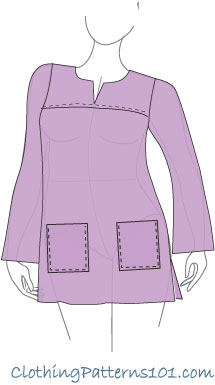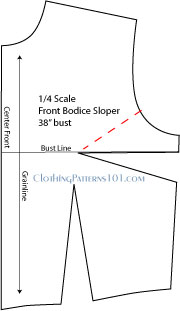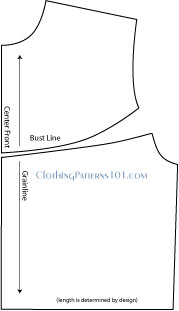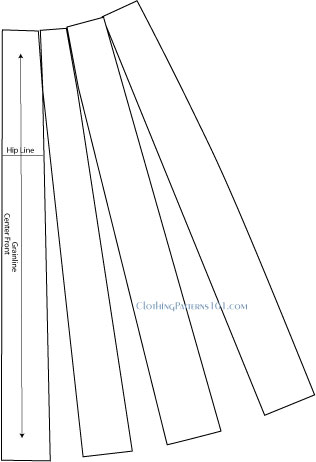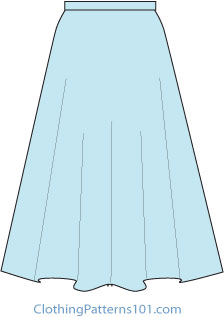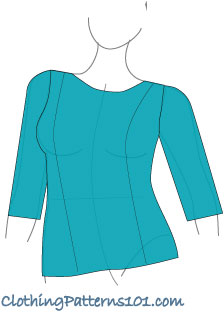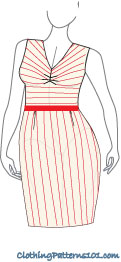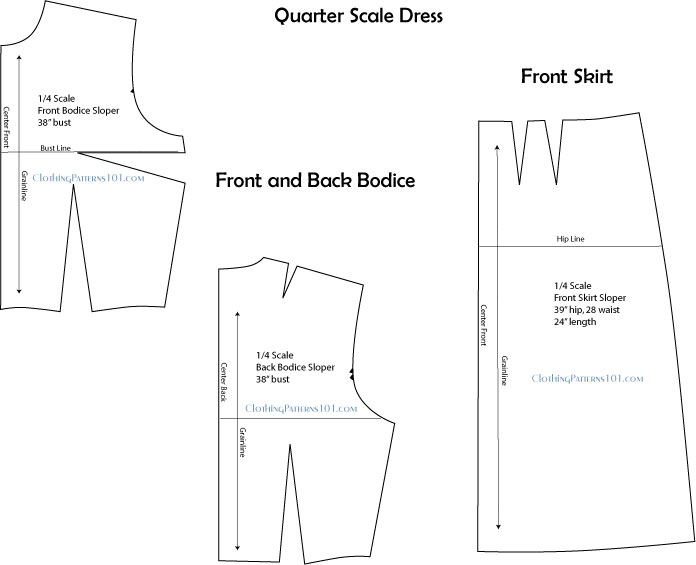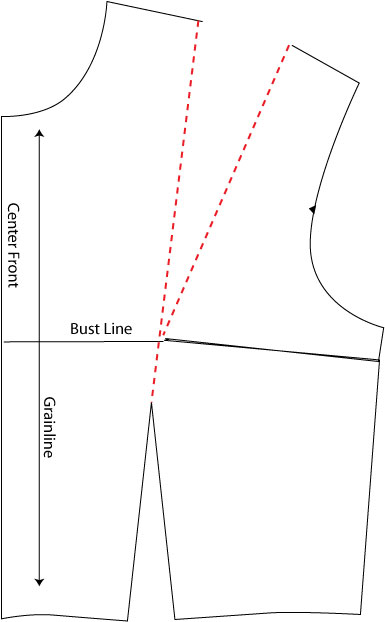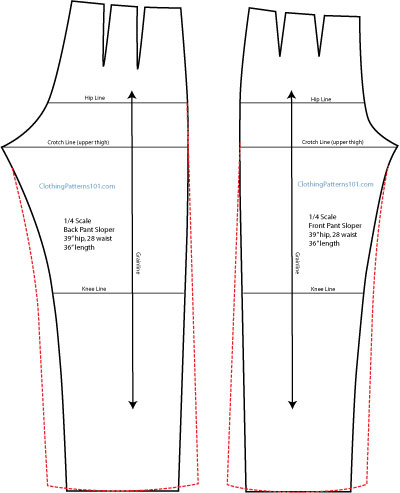- Clothing Patterns 101
- Basic Pattern Techniques
- Drafting a Shoulder Yoke
How to Draft a Shoulder Yoke to Hide the Dart
Add Style Detail and Maintain Fit With a Yoke Seam
A shoulder yoke is more than just a style detail - it's also a way of "hiding" a bust dart! You can add style to your dress or top without a side dart, and still maintain good fit.
Please note: The following directions assume you will be using your personal block to create a full-size pattern. If you are practicing pattern drafting techniques or are experimenting with pattern design, I strongly recommend you print and use our quarter scale patterns.
This simple tunic uses a yoke seam to add styling detail while maintaining the fit at the bust.
The side bust dart is pivoted to the armhole, and then the top of the bodice is separated from the lower portion to create the seam.
We won't go into any of the other details of this tunic on this page, but we will cover, step-by-step, the method of manipulating a dart into a yoke seam.
Start with your basic bodice block (in this case, you can also start with your torso/blouse block - the technique for moving the bust dart is the same).
Trace your bodice or blouse block onto an inexpensive paper like newspaper. This will NOT be your final pattern, so in this case, newsprint is fine. You'll cut this copy up and throw it away when you've completed your final pattern.
DO NOT MARK OR CUT THE BLOCK PATTERN. Make a copy first, and mark and cut the copy.
First, draw a line from the armhole to the point of the bust dart.
Cut along the new line, then close the side bust dart. (Tape it closed)
This will force the armhole dart to open. This is called pivoting the dart, and is used any time you simply want to change the position of a dart.
This gives you the basis for your yoke seam. You can now draw a line along the bust line to complete the yoke shape.
Following the lines of the darts, draw a curve that is pleasing. It doesn't have to follow the darts exactly, but it should be close.
When you cut along the new yoke seam, your lines should be nice and smooth - smooth the points of the darts when drawing your new seam line.
The wider opening at the armhole is your dart. When you sew the yoke seam, you'll still have shape over the bust because you still have the dart shape in your pattern.
Trace these pieces onto your brown craft paper, freezer paper, or whatever you use for your final pattern. You can then toss the newspaper pattern.
It helps to add a few marks along the yoke seam to aid in matching the curve as you sew the seam, but it's not necessary.
In the illustration above, I simply drew a straight bottom without a waist dart (this is also what you'd see if you used the blouse block). You can keep the waist dart if it's needed for the style you're designing, but the tunic shown here would eliminate that dart altogether, and, of course, the top would be much longer.
REMEMBER: Your bodice or blouse block does NOT have seam allowances. After you've made your final pattern (including the proper length and shape of the top or dress), add seam allowances, hems, grainlines, and any other markings you find useful.
Yoke seams can be added to any top or dress. Using the bust dart to create the yoke seam maintains a smooth fit over the bust.
Other Examples for Using Basic Pattern Techniques
Return to Clothing Patterns 101 Home Page
ClothingPatterns101.com does not sell the personal information of its users to anyone, ever.
